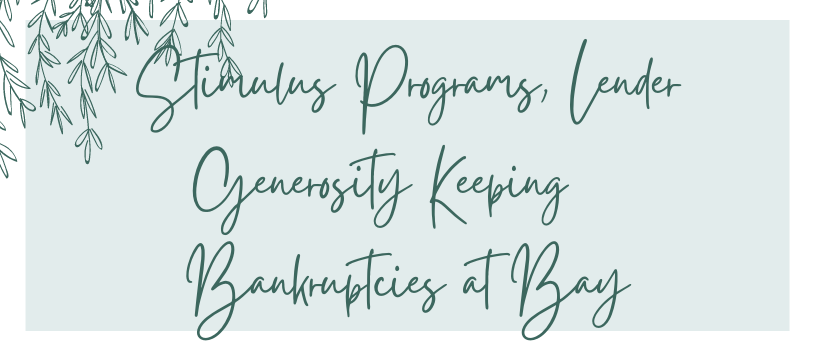While finances have definitely been uncertain and strained over the past two years, the ABI – American Bankruptcy Institute – noted that bankruptcy and chapter 11 filings are down significantly in 2021 compared to 2020. As a matter of fact, bankruptcy filings are the lowest that they have been in 10 years thanks to stimulus money and lender forbearance.
Comparing the first nine months of each year we see a significant percentage drop in filings. In 2020 bankruptcy filings in nine months were at 25,436 whereas in 2021 they measured at 17,311. This is roughly a 32% drop from 2020. Chapter 9 filings in the first 9 months of 2020 were at 5,531 and in 2021 were at 2,924 which is about a 47% decrease. Similarly, in September alone, Chapter 11 filings were at 749 in 2020 and only 247 in 2021 which is a 67% drop for that month!
While these numbers look very positive, many of these government help and stabilization projects are coming to an end which means that businesses may begin to feel the financial pressure again.
Not only are all bankruptcy filings at a 10 year low, but so are business bankruptcies according to S&P Global Market Intelligence. In the first 9 months of this year corporate bankruptcy filings came in around 334 which according to S&P is lower than it has been in 11 years. In September only 32 companies filed for bankruptcy which is lower than the 36 that were filed in August.
Unfortunately, we see more bankruptcy filings from small businesses rather than larger ones. This is because smaller businesses tend not to have as easy access to capital markets as their larger counterparts. Since July no company with over $1 billion in liabilities has filed for bankruptcy.
There is the somewhat new Subchapter V reorganization which is quicker. This raised the filer’s debt ceiling from it’s previous $2.7 million to $7.5 million. About 23% of small businesses filing Chapter 11 are using Subchapter V based on information reported by Bloomberg.
According to S&P, the industry most affected by bankruptcies this year is the consumer discretionary industry with 59 filings so far. This is mostly an industry that sells nonessential goods and services, such as apparel and the vehicle industry. These have been the most impacted by the lockdowns and restrictions directly related to the pandemic.
At the moment, the Federal Reserve has been fairly relaxed with their monetary policies due to the economic hardships that everyone has faced over the last two years. However, those are expected to tighten up quite a bit as we head into next year which means that we expect to see more companies in distress across all industries. Funds are going to begin to dry up for the federal government and private lenders.
Robert Hirsh is a partner for the bankruptcy and restructuring department at Lowenstein Sandler, and told S&P that he does not expect to see a growth in bankruptcy filings until the end of the second quarter of 2022.
Has your small business faced financial hardships and possible bankruptcy in 2021? Do you need help looking at numbers to know where you stand? We are here to help! Contact us for a quote and learn all of the services available to help you and your small business. We can be reached at 310-534-5577 or [email protected].
Find more information from the source of this article here: https://www.cfo.com/bankruptcy/2021/10/stimulus-programs-lender-generosity-keeping-bankruptcies-at-bay/
